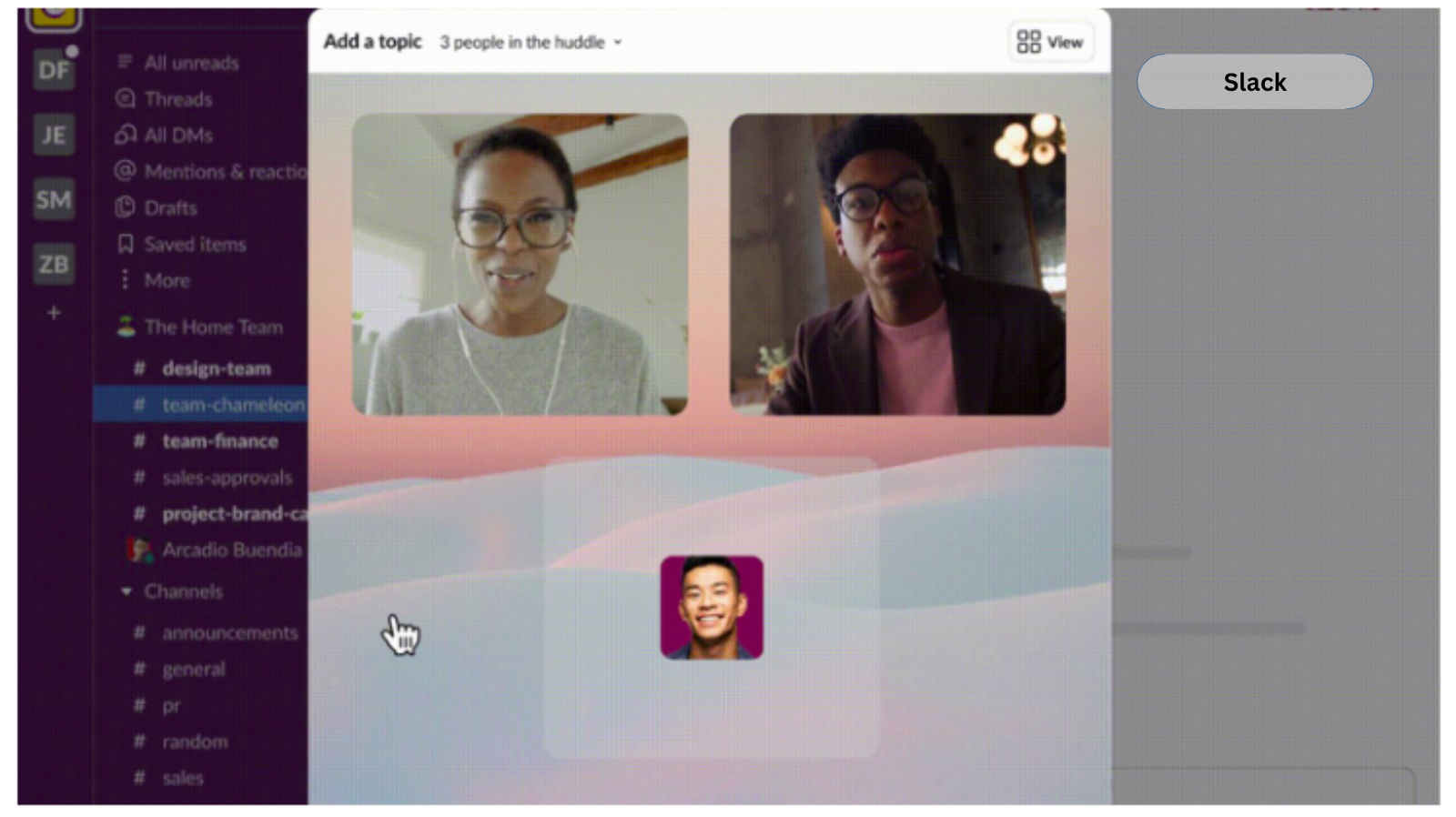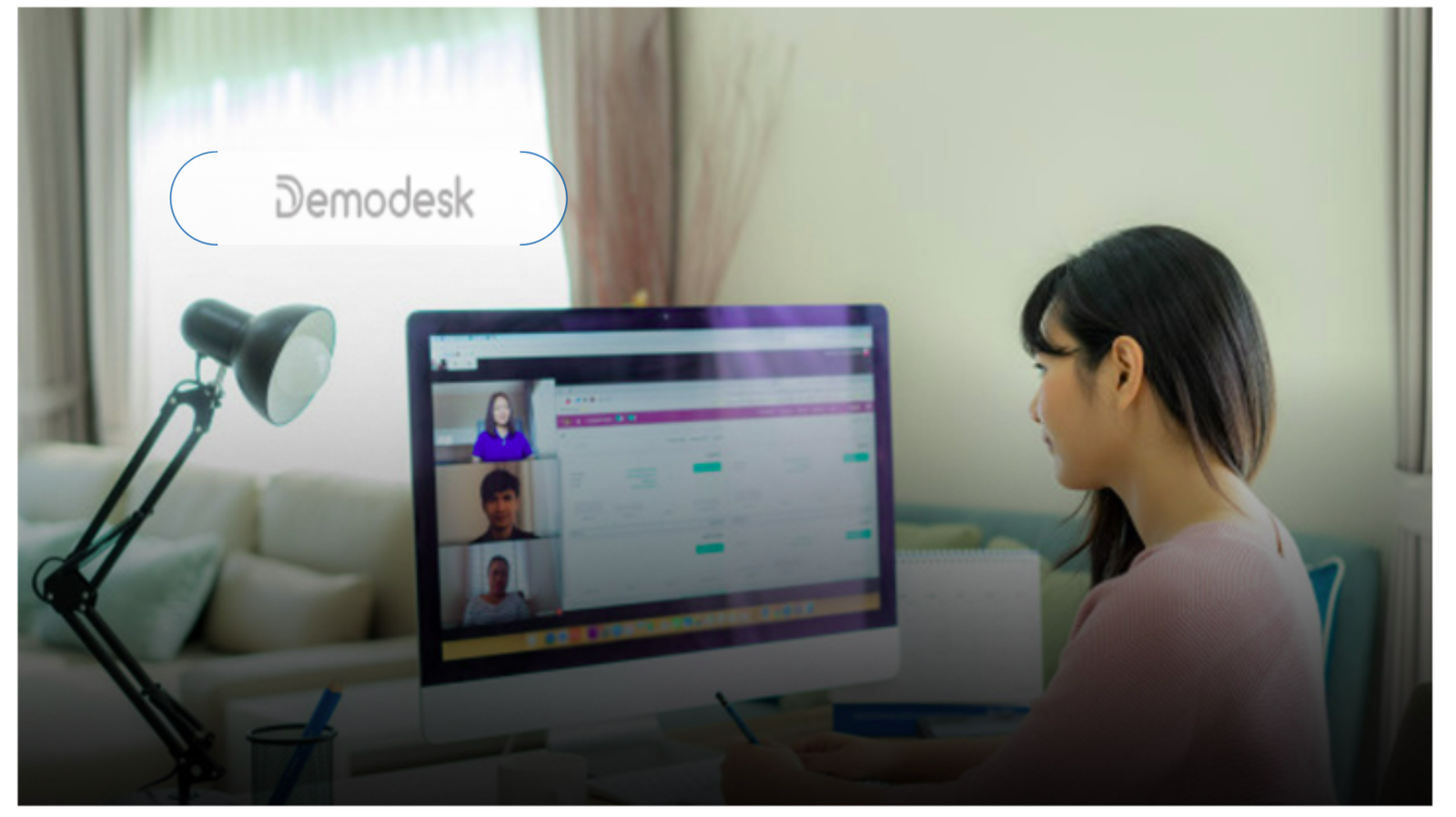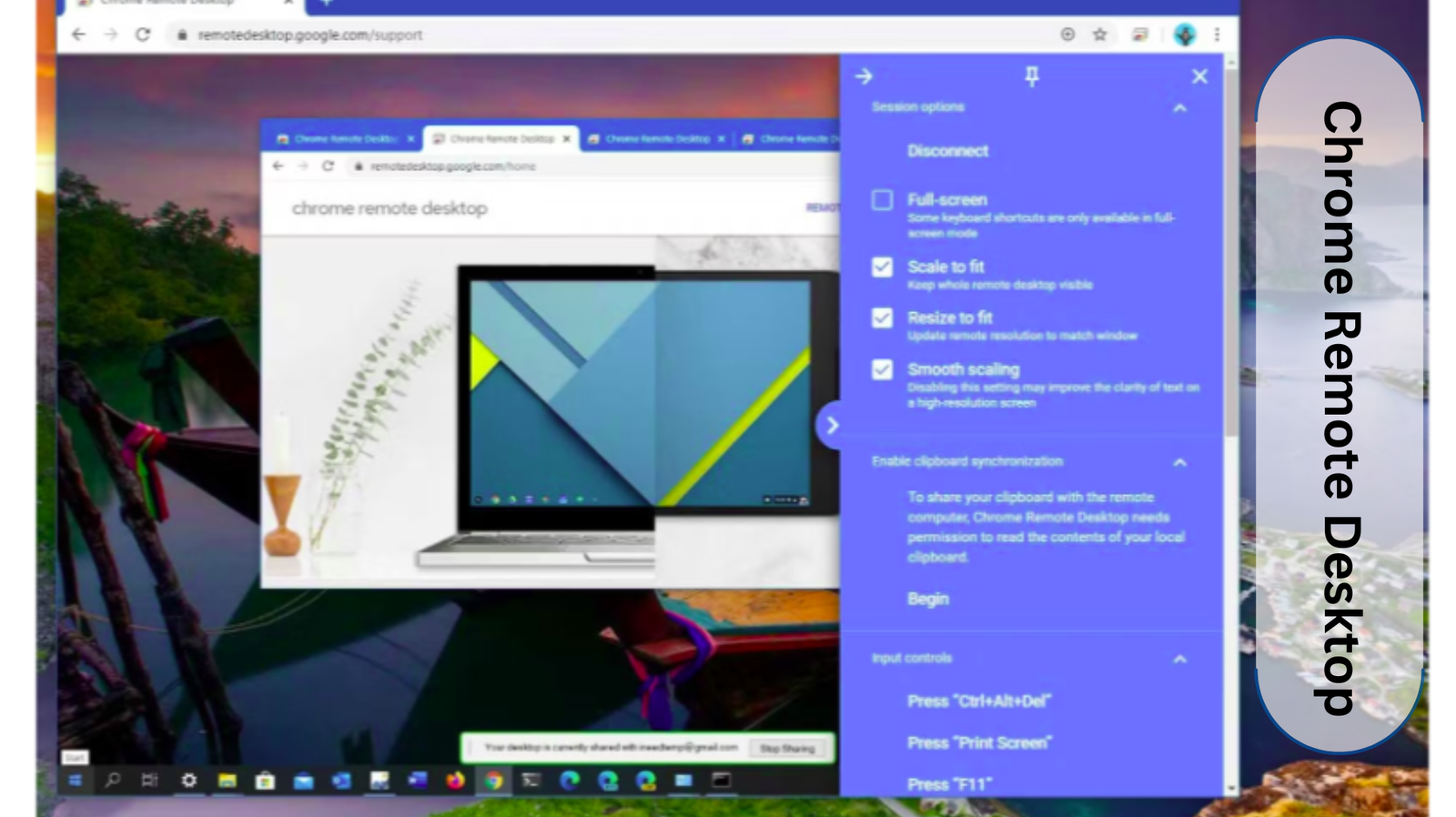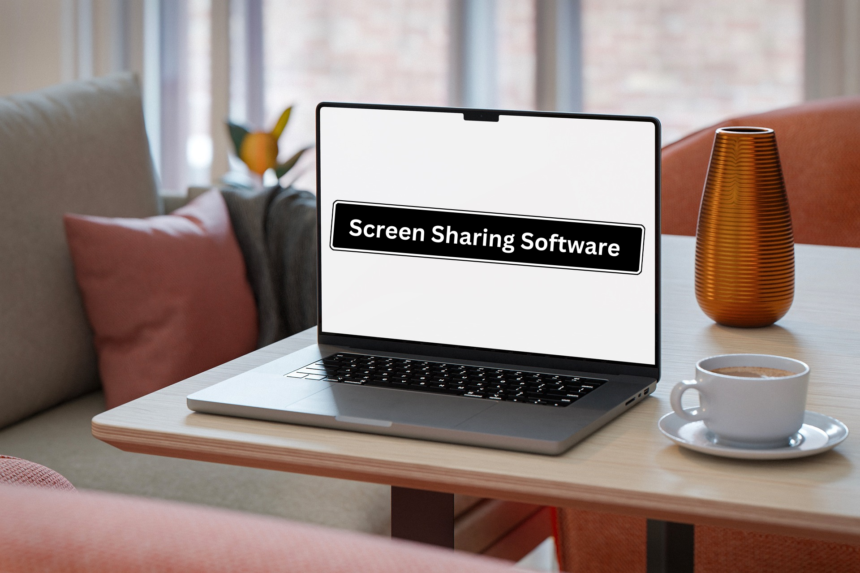In an increasingly interconnected world, where the lines between physical offices and virtual spaces blur, screen sharing software has become more than just a tool—it’s a lifeline for modern communication. As workplaces evolve beyond the traditional nine-to-five setting, with remote and hybrid work setups becoming the norm, the ability to share screens seamlessly is critical. Whether it’s for virtual meetings, team brainstorming sessions, or delivering presentations to clients across the globe, screen sharing software bridges the gap between distance and collaboration. This software isn’t just about convenience; it’s about ensuring that teams, regardless of where they are, can work together as if they were in the same room. The ability to share ideas, projects, and data in real-time transforms how we interact, making remote work not just possible, but efficient and effective. In this digital age, where staying connected and competitive is paramount, screen share software plays an indispensable role. It empowers businesses to move at the speed of innovation, making sure that no one is left out of the conversation, no matter where they are in the world.
User-Friendly Screen Sharing Software
Imagine trying to explain a crucial project to a colleague, only to spend precious minutes fumbling through menus or troubleshooting features. That’s where a well-designed interface comes into play. When a tool is crafted with simplicity in mind, it transforms into an invaluable asset instead of a frustrating hindrance.
This streamlined experience not only saves time but also enhances productivity, allowing users to dive straight into their work. For businesses, a user-friendly screen sharing tool means less training time and more effective collaboration, enabling teams to communicate their ideas clearly and efficiently. In a world where every second counts, the ease of use offered by these platforms can significantly impact overall success. Ultimately, when technology aligns seamlessly with user needs, it fosters an environment where creativity and innovation can flourish.
High-Quality Video and Audio Sharing
When conveying ideas, details matter immensely. Screen sharing tools with high-quality video ensure that every slide, chart, or design is displayed with the sharpness it deserves. This clarity is particularly crucial during presentations, where visuals play a pivotal role in driving home key points.
Imagine showcasing an intricate graph that highlights your business’s growth over the past year, only for it to appear pixelated or distorted. Such blurred images or choppy visuals can seriously detract from the message, leaving your audience confused and disengaged. When your visuals lack clarity, the essence of your ideas gets lost, which can diminish the overall impact of your presentation.
High-definition video sharing not only enhances the user experience but also instills confidence in the presenter. It allows for smoother transitions between slides and clearer demonstrations of products or services, making remote presentations feel as effective as in-person meetings. Moreover, quality visuals foster a more engaging atmosphere, encouraging active participation from attendees. When they can see everything clearly, they’re more likely to understand and engage with the content, ask questions, and contribute to discussions.
In today’s digital age, where remote communication is the norm, investing in screen sharing tools that prioritize video quality is essential. It transforms virtual interactions into dynamic experiences that truly resonate, bridging the gap between distance and engagement. The right technology can make all the difference, empowering you to share your vision with clarity and impact.
Low-Latency Audio for Smooth Communication
Imagine trying to discuss a crucial project update only to be met with echoing delays or muffled sound. This frustration can lead to misunderstandings and hinder the natural flow of conversation. Smooth, real-time dialogue encourages open discussion and allows for quick responses, which is particularly vital in high-stakes business discussions or environments that require rapid decision-making.
In these scenarios, it’s essential that conversations flow as naturally as they would in face-to-face interactions. Participants should feel comfortable expressing their thoughts and asking questions without the distraction of technical difficulties. When audio is reliable, it promotes a sense of connection, making remote interactions feel more personal and engaged.
Additionally, high-quality audio contributes to the overall professionalism of virtual meetings. It reflects a commitment to clear communication, which can enhance your team’s image and build trust with clients or partners. Investing in screen sharing software that prioritizes low-latency audio not only improves day-to-day operations but also strengthens relationships and fosters a culture of collaboration, even from a distance. As the world embraces remote work, ensuring that every voice is heard clearly will be a crucial aspect of successful team dynamics.
Real-Time Collaboration Tools
Screen sharing software goes beyond mere viewing—it’s about fostering active participation and collaboration among team members. Built-in annotation tools transform passive observation into an engaging experience, allowing participants to highlight key points, draw attention to specific sections of the screen, and interact with the shared content in real time. Imagine a brainstorming session where everyone can visually express their ideas, circling important data or jotting down thoughts directly on the screen. This dynamic interaction encourages a more inclusive atmosphere, ensuring that every voice is heard and valued.
The ability to annotate enhances the collaborative experience significantly. It encourages team members to contribute their insights, making discussions more lively and effective. When someone can visually clarify their thoughts without interrupting the flow of conversation, it minimizes confusion and enhances understanding. This real-time interaction is especially valuable during complex discussions, where visual cues can simplify intricate ideas or data sets.
Ensuring Smooth Screen Sharing Across Devices and Operating Systems
Imagine a scenario where a team is spread across different geographical locations, each member logging in from their own device. If the screen sharing software doesn’t support all these platforms, it can lead to frustration and hinder communication. In a world where remote work is becoming the norm, having the flexibility to connect easily is not just a benefit; it’s an absolute necessity. Everyone should feel empowered to contribute, whether they’re at home, in a café, or on the go.
Moreover, this cross-platform compatibility helps break down barriers and creates an inclusive environment. When team members can use their devices of choice without worrying about compatibility issues, it cultivates a sense of comfort and trust. It allows them to focus on the task at hand instead of grappling with technical difficulties.
Mobile App Support for On-the-Go Usage
The modern professional is no longer confined to a desk, and the shift towards a more mobile workforce has become increasingly apparent. Today’s employees often find themselves balancing work responsibilities with their everyday lives, and mobile support for screen sharing is essential to making this balance feasible. It allows users to actively participate in screen sharing sessions while on the move, ensuring they stay connected and productive no matter where they are.
Imagine a busy professional commuting on a train or waiting at an airport. With mobile access to screen sharing tools, they can join important meetings, share updates, and collaborate with their teams in real-time. This level of connectivity is invaluable, especially when unexpected events arise, or when teams need to make quick decisions. It transforms the way we think about productivity; no longer do we have to be tethered to a desk to make meaningful contributions.
Whether commuting, traveling, or working remotely from a café or a park, the ability to access screen sharing tools on mobile devices adds a layer of flexibility that caters to today’s dynamic work environments. This flexibility empowers employees to seamlessly transition between their personal and professional lives without compromising the quality of their work.
Additionally, mobile support facilitates spontaneous brainstorming sessions. If inspiration strikes while on the go, users can quickly pull up their screens, share ideas, and discuss them with colleagues. This immediacy can lead to innovative solutions that might not have emerged in a more traditional office setting.
Following are the user friendly and top screen sharing software
Slack: Screen Sharing Software

Slack isn’t just a messaging app—it’s also great for screen sharing during virtual meetings.
Features:
- Screen sharing: Share your screen during voice or video calls.
- Annotation tools: You can draw on your shared screen to highlight important points.
- Messaging integration: Slack’s best feature is how seamlessly screen sharing fits with its chat, making it easy to switch between messages and calls.
- File sharing: You can also upload and share files quickly while on a call.
Rating:
4.5/5
- Usage: Slack is perfect for teams that already use it as a primary communication tool. It’s best for quick, impromptu screen sharing during daily check-ins or smaller meetings.
Pricing:
- Free: Screen sharing is available even on the free plan, though with fewer features.
- Paid plans: Start at $7.25 per user/month.
Advantages:
- Combines screen sharing, messaging, and file sharing in one app.
- Easy to use for teams already on Slack.
- Available on both desktop and mobile.
join.me: Screen Friendly software

join.me is a simple, user-friendly tool for fast screen sharing, and it doesn’t require much setup.
Features:
- Instant screen sharing: Start sharing your screen right after setting up a meeting link.
- Video conferencing: You can have video meetings while sharing your screen.
- Call scheduling: Send invites and schedule meetings directly from the app.
Rating:
4/5
- Usage: Ideal for businesses or individuals needing quick screen sharing with clients or team members. It’s straightforward and doesn’t bog you down with complex features.
Pricing:
- Free plan: Screen sharing with limited participants.
- Paid plans: Start at $10 per user/month, with more participants allowed.
Advantages:
- Super easy to set up and join meetings.
- Good for quick, no-frills screen sharing.
- Clean interface, simple for people new to screen sharing software.
Demodesk: Business Supporting Software

Demodesk is designed with customer-facing teams in mind, like sales or customer support.
Features:
- Screen sharing: Focuses on presenting to clients without them needing to download anything.
- Virtual display: Rather than sharing your screen directly, Demodesk shows a virtual display, which gives you more control and privacy.
- Meeting scheduling: It has built-in tools for scheduling and organizing client meetings.
- Collaboration tools: Annotate, co-browse, and assist clients directly during the meeting.
Rating:
4.7/5
- Usage: It’s perfect for sales demos, customer support calls, or any situation where you want to impress clients. Demodesk makes the experience feel polished and professional.
Pricing:
- Starts at $25 per user/month, with all features included.
Advantages:
- No need for clients to download anything to join meetings.
- Offers a virtual screen for secure, controlled sharing.
- Excellent for businesses that rely on customer meetings or demos.
Chrome Remote Desktop

Chrome Remote Desktop is more about remote access and control than just screen sharing, but it’s still a powerful option.
Features:
- Remote access: You can control another device from anywhere.
- Screen sharing: Basic screen sharing, but with the added ability to take control of the other person’s desktop.
- Cross-device support: Works on almost any device, from PCs to smartphones.
Rating:
4.3/5
- Usage: Chrome Remote Desktop is ideal for IT support or when you need to access your computer remotely. It’s less about collaboration and more about giving or receiving remote help.
Pricing:
- Free: 100% free to use.
Advantages:
- Simple and secure way to access or control another computer.
- Works seamlessly on any device, from smartphones to tablets.
- Completely free with no hidden costs.
For more details visit our Software section.







